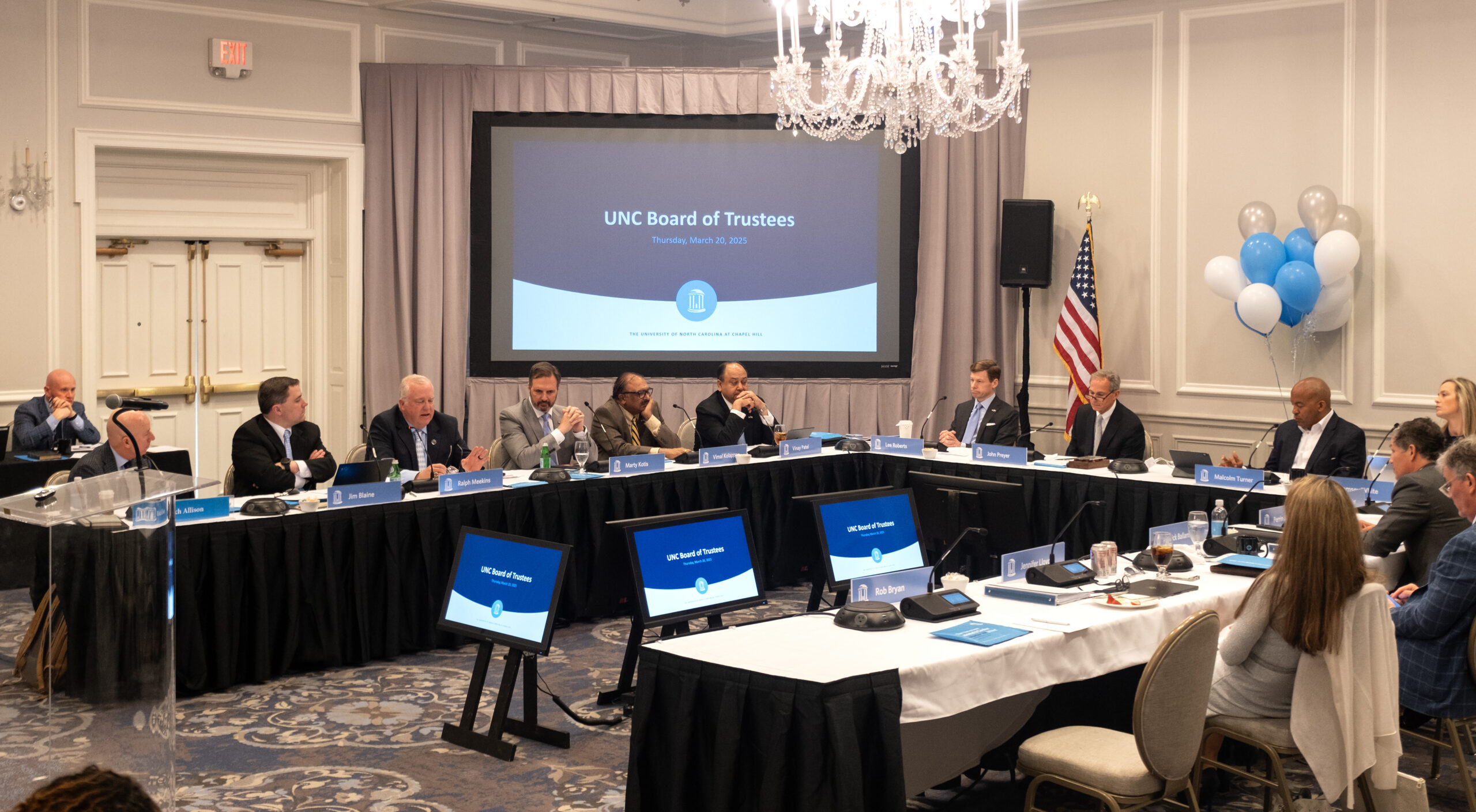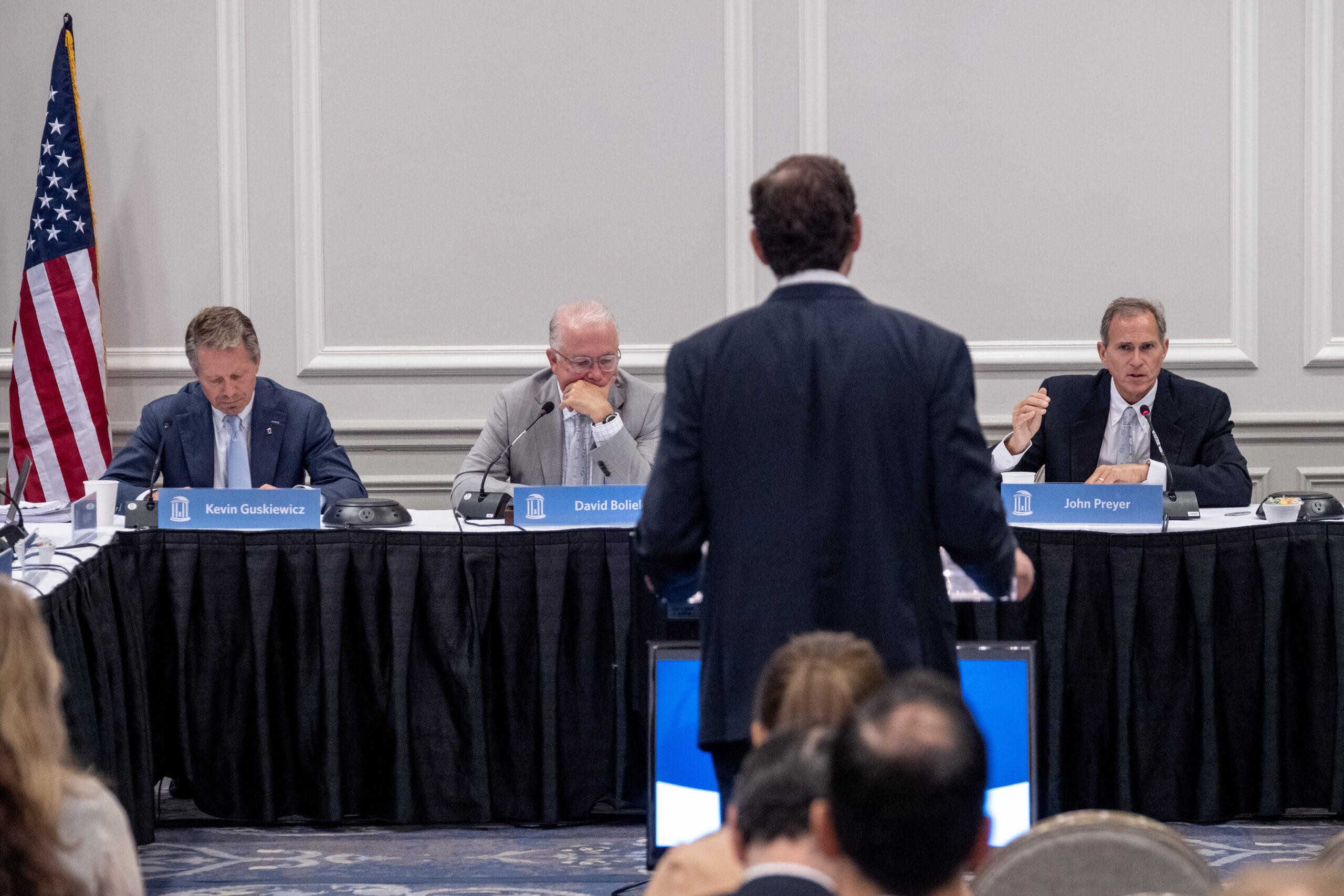In 2021, overdose-related deaths in North Carolina increased by 22 percent, with the majority of the deaths being driven by illegally manufactured fentanyl.
At the most recent UNC Board of Trustees committee meeting, a group of researchers from the Gillings School of Global Public Health and other health professionals shared what the university is currently doing to combat opioid overdoses on campus.
According to Director of Student Wellness Dean Blackburn, the UNC community has not been spared by the rise in opioid-related deaths.
“In the last 20 months, we have lost three active students and one young alum to fentanyl poisoning,” Blackburn said, “and I use that term specifically, not overdose, because our students and alum were not using fentanyl. They were using other substances that were laced with fentanyl and they did not know that and the result of that poisoning was their death and our loss. So this is real here at Carolina, in North Carolina and across the country.”
Fentanyl is a potent synthetic opioid sometimes added to other drugs to cut manufacturing costs. Fentanyl’s high potency means even just a small amount can prove deadly. When a user isn’t aware that a drug has been laced, it could easily lead to an overdose.
Scientist at the Injury Prevention Research Center Nabarun Dasgupta said addressing the issue is part of UNC’s responsibility to its students.
“Our duty is to keep people alive for when they’re on campus. But our duty does not stop there,” Dasgupta said. “As an educational institution, I feel that we need to equip our students with the skills they need to address the drugs they will encounter after they graduate and also create the structures and provide the services while they’re on campus to learn and cope with the underlying causes that are driving the problematic substance abuse in the first place.”
According to Melissa Cox, Assistant Professor in the Department of Health Behavior, the university needs to take a multifaceted approach in order to be successful.
“In public health, this is a type of issue that is far more complex and far greater in scope than any one particular initiative is going to solve on its own, any one particular group is going to solve on its own, and therefore it requires a very integrated and concentrated approach,” said Cox.
Blackburn said UNC’s strategies address the opioid crisis at three different stages: prevention, intervention and support.
Some of the prevention strategies discussed at the meeting include reaching students early with educational materials and providing alternative sober activities in the evenings.
Intervention tactics are used by the university to identify and help students at the greatest risk of developing substance abuse issues. UNC currently has one dedicated clinical substance abuse counselor for students, located at Student Wellness, and plans to add another this fall.
Support measures are also present for students who are already struggling. Blackburn said the university has strived to build a network of providers students can be connected to when interventions and increased help are needed.
In addition to the university’s efforts, some students are taking it upon themselves to address the issue.
Undergraduate student Riley Sullivan is the director of a peer-to-peer support network called “CHRU” for students struggling with mental health or substance abuse issues.
“I was personally motivated to join this project because there have been several times that I’ve gone to the student pharmacy hoping to get naloxone, but every time I’ve gone, I’ve been turned away because they’ve run out of their monthly allotment,” Sullivan said. “And this led me to think of possible solutions to the lack of resources on campus like fentanyl testing strips and naloxone.”
CHRU provided over 200 naloxone kits to the campus community last year, and Sullivan said it is projected to give over one thousand kits this coming year.
Dasgupta told the board that peer support has been shown to make a major difference with substance abuse issues and groups like CHRU that prioritize student engagement are essential.
“We can have all the formal supports, we can have all the research, but in order to translate that into actual lives saved, that’s where we need more groups like Riley’s and we should do more to support them,” he said.
Blackburn said UNC is in a powerful position to support students already suffering from substance abuse and those who might later on because of the leading experts and passionate students it houses.
“If we had a centralized place where we’re all working together and a dedicated spaces for students interested in sobriety to come on campus,” he said, “that’s going to go a long ways in supporting what were hoping to do in changing the impacts for our students here.”
Board members asked the presenting group to prepare materials noting the availability of test strips and where naloxone distribution should be located on campus.
To watch the full presentation click here. To find links to on-campus resources click here.
Photo via Olga DeLawrence.
Chapelboro.com does not charge subscription fees, and you can directly support our efforts in local journalism here. Want more of what you see on Chapelboro? Let us bring free local news and community information to you by signing up for our biweekly newsletter.











